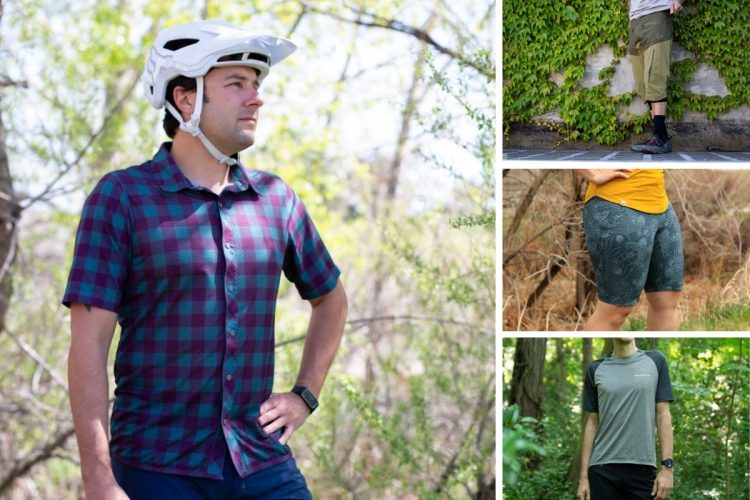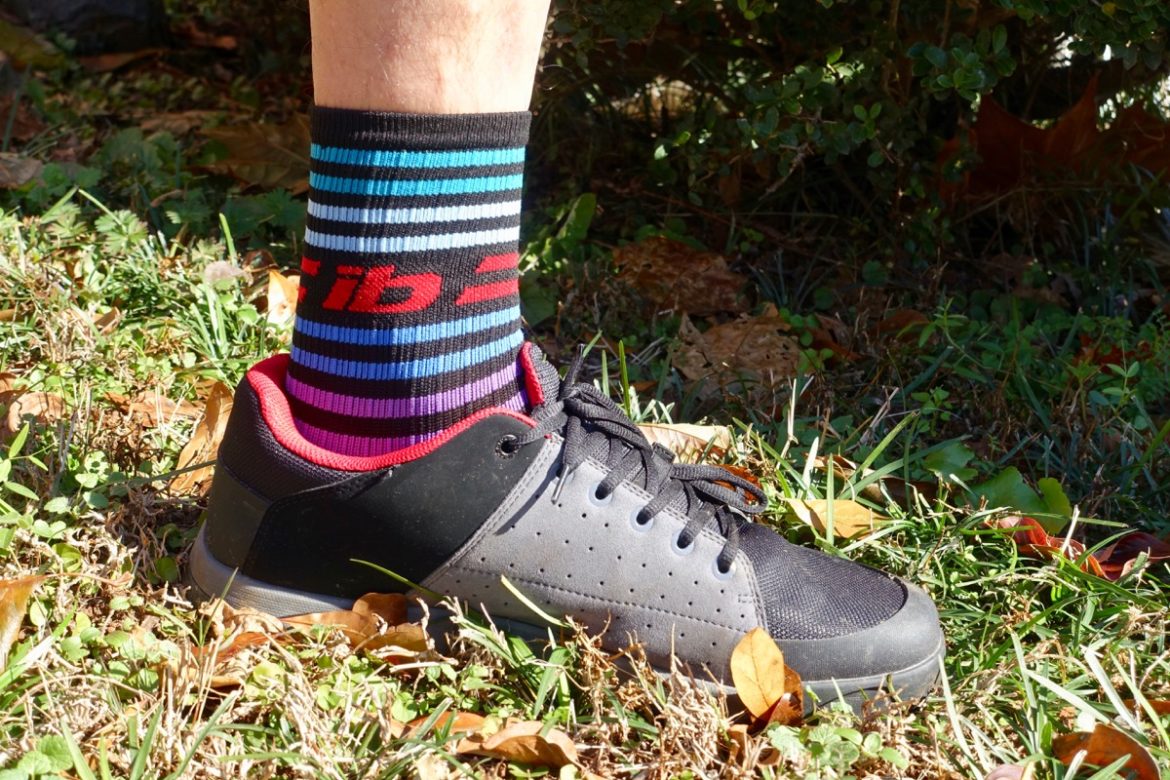
Over the years we’ve been asked to review various mountain bike socks, and each time we’ve politely said “no thanks.” Socks are dead simple and they’re all the same, right? That’s what we thought, at least until we did our homework.
A few years ago mountain bikers could be forgiven for thinking sock choices come down to matching colors and wacky graphics, but that’s no longer the case. There is a sock for every type of ride, and quality is important. So, we gathered up all the pairs we could find to see what sets great mountain bike socks apart.
Cuff height






Almost two years ago we asked readers to weigh in on their preferred MTB sock cuff height, and it seems most folks prefer either mid or tall socks on the trail. While it’s possible to find low or even no-show socks designed for cycling, most mountain bikers avoid these because they don’t offer protection from trail nasties like thorns, poison ivy, and poison oak. Not only that, short socks tend to invite dirt into the sock and shoe. Yuck.
Obviously a taller sock is going to offer more protection on the trail, but it will also run hotter than a mid-rise or low sock. Tall socks are a good choice on a cold day, but less so in the summer. Some riders just don’t like the look of a tall sock with shorts.
Many socks specify the cuff height which allows buyers to dial in exactly the amount of coverage they prefer. Socks with a zero to one-inch cuff are considered no-show or ankle, while socks two to five inches are called quarter-crew or just crew. Tall socks generally feature a cuff that’s seven inches or higher.
Swiftwick actually names their socks based on the cuff height (for example, the Vision Five Dash has a 5-inch cuff) while others like Giro clearly display the height on the packaging (see photo below).
Looking strictly at performance, go with a tall sock for extra protection or warmth. Otherwise, a sock with a mid-rise cuff is a fine choice and keeps the sock tan line low.
Materials

Prepare to have your mind blown by the variety of materials that are combined to construct mountain bike socks.
Nylon, aka Polyamide
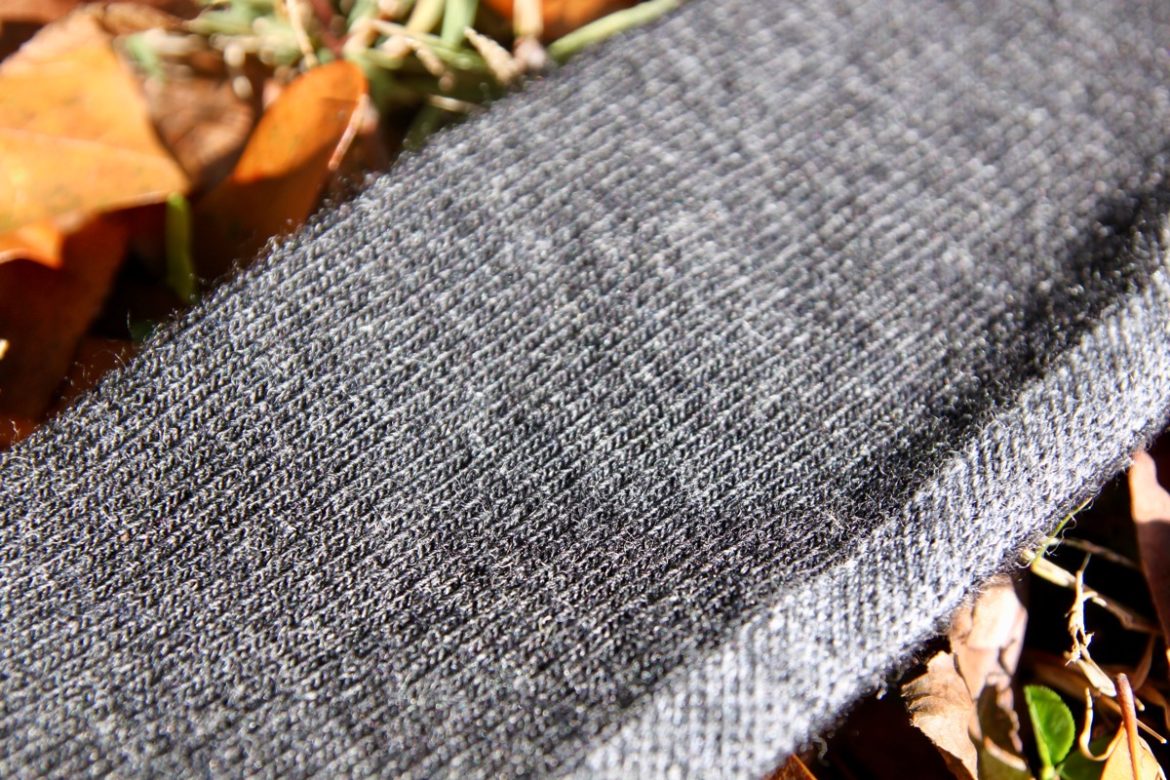
Nylon is used, at least in part, in constructing most cycling socks. The material is a good choice for socks and other cycling apparel like jerseys and shorts because it doesn’t absorb a lot of moisture and is quick drying, lightweight, soft, and warm. Among the cycling socks we looked at, some, like the Swiftwick Vision Five Dash, are made of as much as 96% nylon.
Some socks, like the Gore C3 Optiline, list polyamide on the materials list. Nylon is actually just a type of polyamide.
Polyester
Some cycling socks augment the nylon content with polyester. The two materials are fairly similar, though nylon is slightly more expensive to manufacture. Polyester is more UV resistant than nylon and unlike nylon, is recyclable. The material is said to offer similar insulating value to nylon.
When used in combination with nylon, polyester is usually mixed in lower quantities than nylon.
Acrylic
Another synthetic fiber used in cycling socks, acrylic, is known to provide a wool-like feel, so it can be used in thermal socks and jerseys. The material can also be processed in a way that mimics the softness of cotton. One of the drawbacks is the material may pill easily.
Merino wool

To many cyclists, merino wool is the gold standard when it comes to socks and even jerseys. The term can be a bit misleading in that it rarely signifies a garment that is made from 100% merino wool, or even from a Merino sheep raised in Spain specifically bred for clothing meant to be worn directly against the skin.
Among the merino wool cycling socks we looked at, some are made up of as little as 30% merino wool, while even those with the highest merino content claim just 58%.
Spandex, aka Lycra
Every sock on our list features a small amount — from 1-10% — of Lycra or Spandex content. This is the stuff that keeps socks stretchy and prevents saggy socks.
Cotton
It’s rare to find cycling socks made from cotton, and for good reason. Cotton tends to absorb and hold onto moisture which can irritate the skin over long periods on the bike. The material also loses insulating value once it gets wet, which means it’s definitely not a good choice for winter riding.
Cycling-specific socks tend to be thinner than most cotton socks with a similar durability. If you’re riding with generic cotton or even running socks, give a pair of synthetic cycling socks a try and see what a difference they can make.
Construction
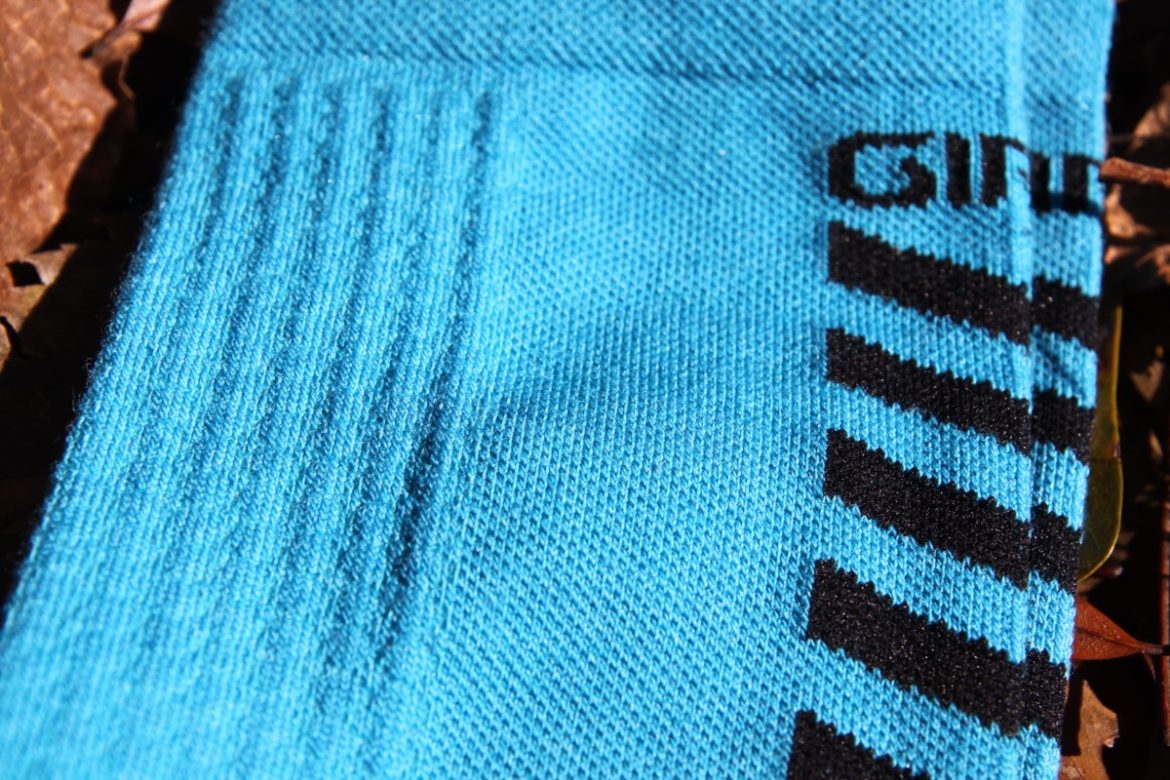
While socks might seem like simple foot tubes, they can actually be pretty complex in terms of construction.
The heel and toe areas are important to focus on, as these take the most abuse and they’re also potential pain points. Good socks tend to avoid placing seams at the crux of the heel or toe, and generally offer reinforcement. Some may add padding there too, for comfort.
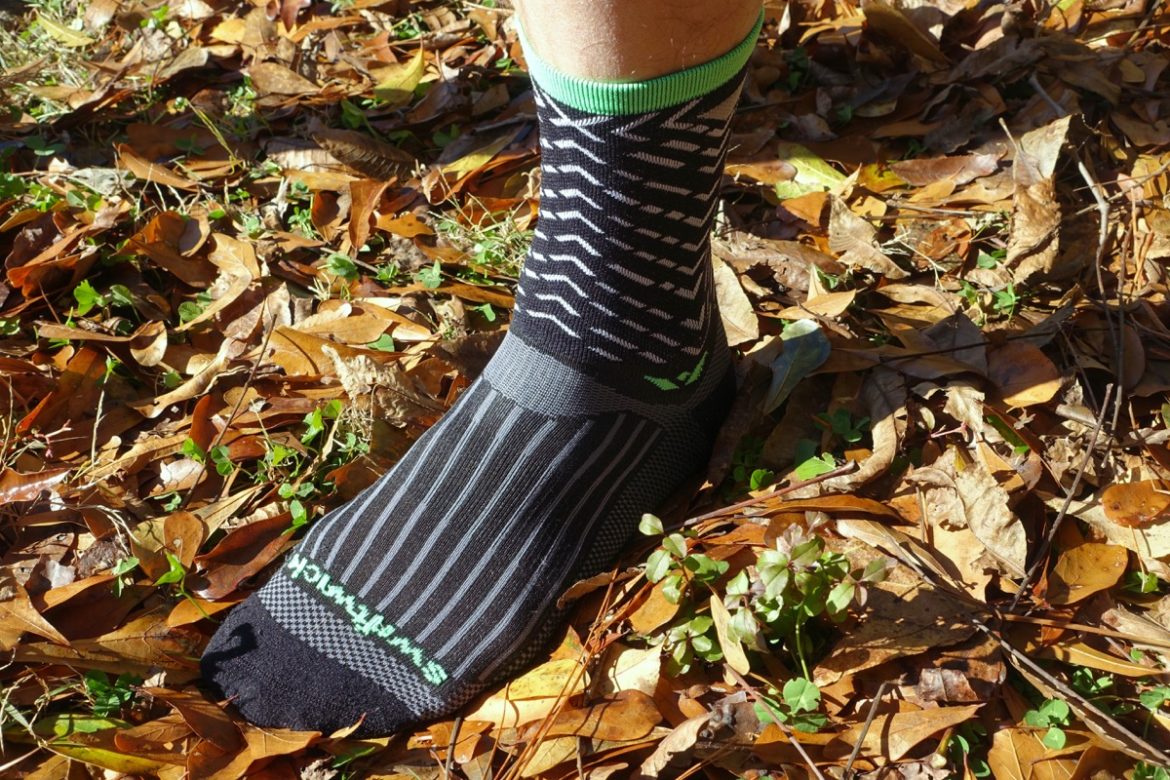
Compression
One of the hot things in socks today is the use of compression to aid in comfort and performance. While the benefits may be somewhat questionable, many riders will no doubt prefer socks with compression across the mid foot and/or the cuff. Socks can offer varying levels of compression as well.
Sizes
Good cycling socks are offered in multiple sizes. Getting a pair of socks that fits is important, so avoid one-size-fits all socks which can lead to blisters or premature wear. Swiftwick generally offers four sock sizes across the line, while Pearl Izumi offers three sizes for men and three for women.
Aside from the aesthetics and sizes, cycling socks tend to be gender-neutral so choose based on performance first.
Aesthetics
Speaking of aesthetics, the reason most socks are black or another dark color — at least the ones designed specifically for mountain biking — is to avoid showing dirt. Mountain bikers can’t avoid kicking up dust and getting dirty, which means white socks are out.
Somewhere along the line cyclists and mountain bikers in particular got the idea that socks are a great place to show a little personality so there are socks with literally any imaginable design available. They also make good race and event swag.
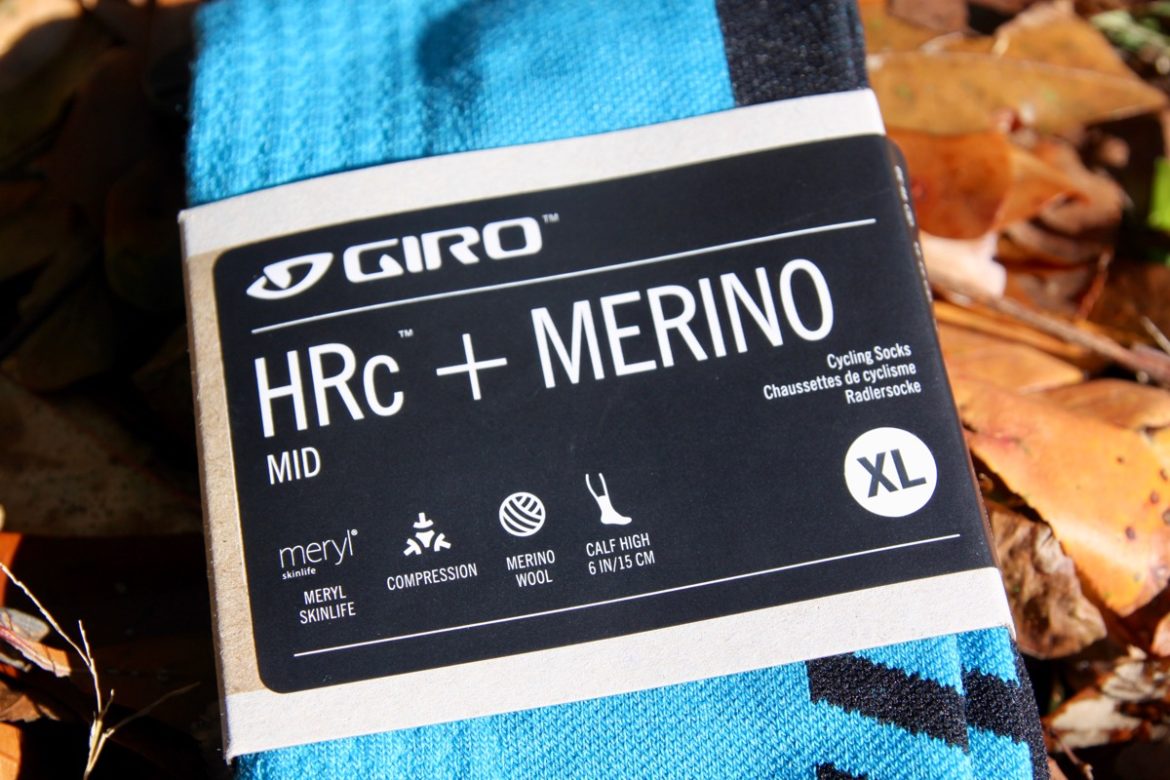
Because cycling socks are fairly inexpensive, it’s easy to collect different pairs for different seasons. Knowing about the materials, construction, and sizing should making picking the right sock for the job a piece of cake.
Thanks to Pearl Izumi, Gore, 100%, Swiftwick, and Giro for providing socks for testing and review.












